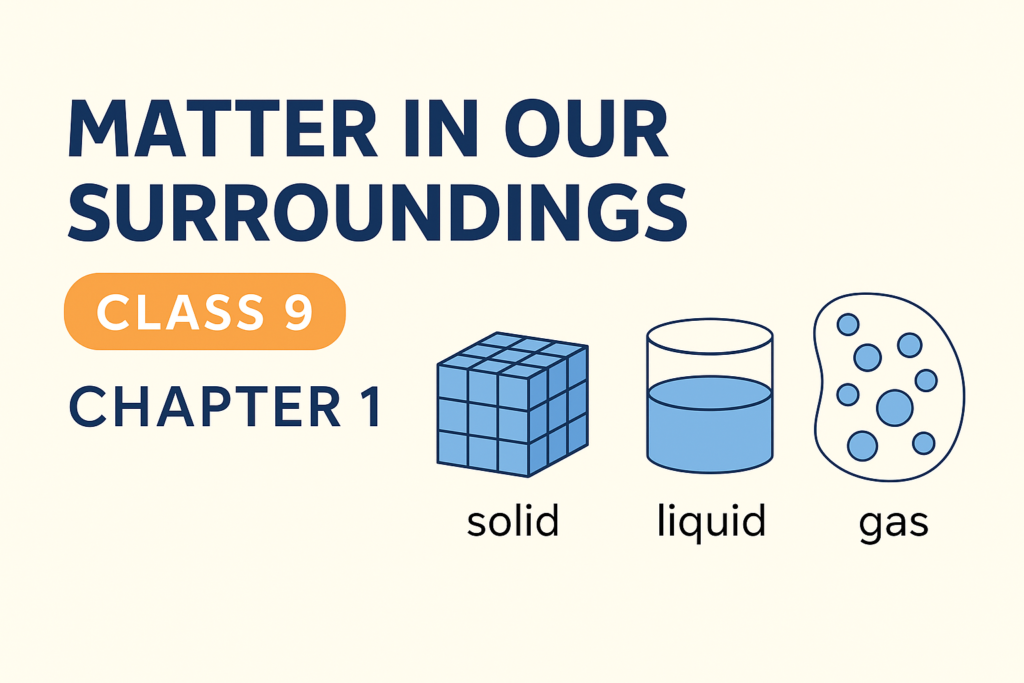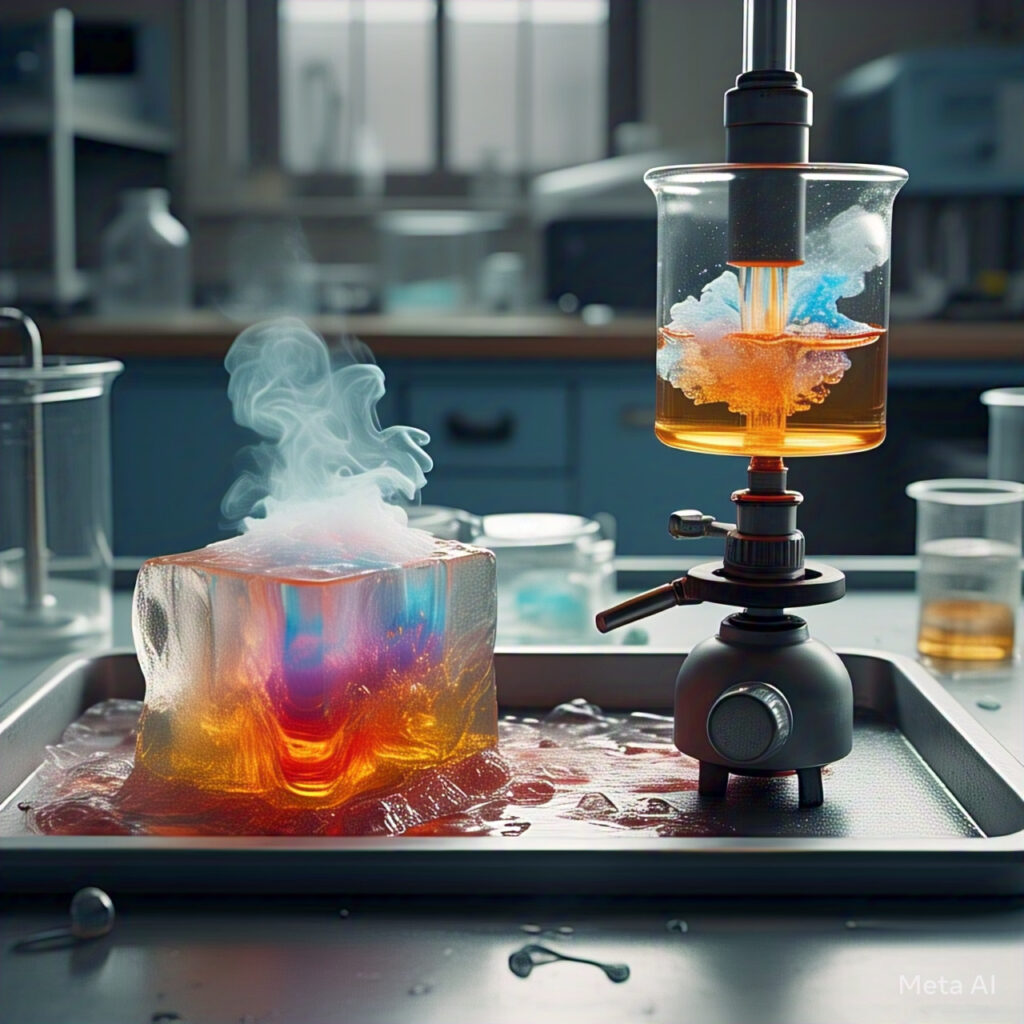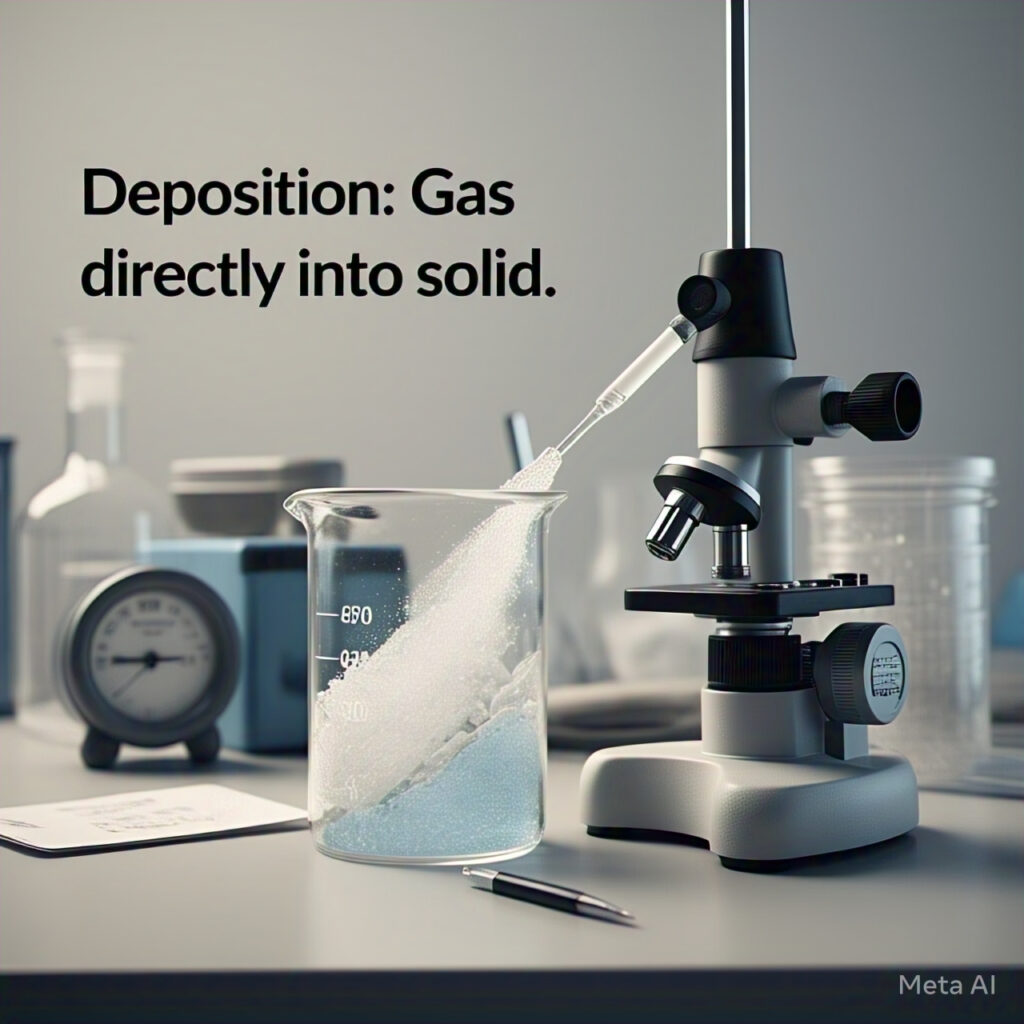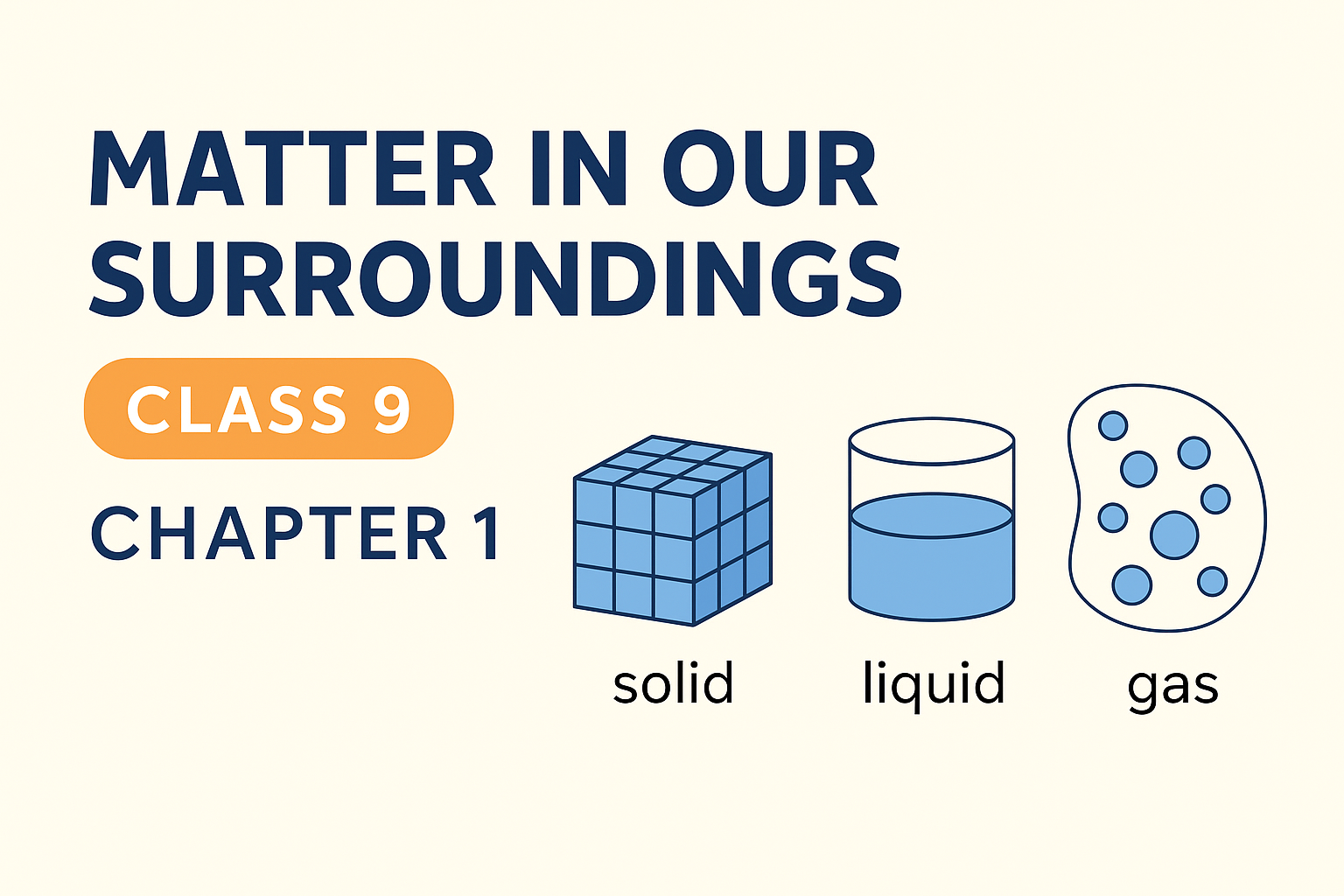
Matter in Our Surroundings – Class 9 Science Chapter 1 Notes, Summary, and Q&A. Ever wondered how ice melts into water or how wet clothes dry in the sun? All these transformations are part of a fascinating concept in science called “Matter in Our Surroundings.” In this chapter of Class 9 Science, we explore the nature, behavior, and states of matter that make up everything around us. This blog provides complete CBSE Class 9 Science Chapter 1 notes, key concepts, NCERT question-answers, diagrams, and summary.
Matter in Our Surroundings – Class 9 Science Chapter 1 Notes, Summary, and Q&A
What is Matter?
Matter is anything that has mass and occupies space. From a small grain of sand to the stars in the sky, everything around us is matter. According to ancient Indian philosophy, matter is made up of Panch Tatva – Earth, Water, Air, Fire, and Sky.
In modern science, matter is classified based on its physical and chemical properties.
Physical Nature of Matter
- Matter is made up of particles: These particles are so tiny that they can’t be seen with the naked eye.
- Particles are very small: Just a few crystals of potassium permanganate can color a large volume of water, showing how small and powerful these particles are.
Characteristics of Particles of Matter
- They have space between them
- They are continuously moving (motion increases with temperature)
- They attract each other
Flowchart: Characteristics of Matter
Characteristics of Matter
|
-------------------------------------
| | | |
Have Space Move Constantly Attract Each Other
States of Matter
Matter exists in three main states:
| Property | Solid | Liquid | Gas |
|---|---|---|---|
| Shape | Fixed | Not fixed | Not fixed |
| Volume | Fixed | Fixed | Not fixed |
| Compressibility | Very low | Low | High |
| Flow | No | Yes | Yes |
| Particle Motion | Vibrate only | Slide past each other | Move freely |
Interconversion of States of Matter

Matter can change from one state to another by changing temperature or pressure.
Flowchart: Interconversion of States
Solid
|
(Melting / Heat ↑)
↓
Liquid
|
(Boiling / Heat ↑)
↓
Gas
↑
(Condensation / Cool ↓)
|
Liquid
↑
(Freezing / Cool ↓)
|
Solid
Sublimation (Solid ↔ Gas)
- Melting Point of Ice: 273 K (0°C)
- Boiling Point of Water: 373 K (100°C)
- Latent Heat: Heat used to change state without changing temperature
Sublimation & Deposition
- Sublimation: Solid changes directly into gas (e.g., camphor)
- Deposition: Gas changes directly into solid


🌬️ Evaporation & Cooling
Evaporation causes cooling (e.g., sweating, perfume on skin)
Factors:
Surface Area ↑ → Evaporation ↑
Temperature ↑ → Evaporation ↑
Humidity ↓ → Evaporation ↑
Wind Speed ↑ → Evaporation ↑
Evaporation causes cooling as it takes away heat from the surroundings. This is why sweat cools your body or water in a matka feels cool in summer.
Important Definitions
- Matter: Anything that has mass and occupies space
- Melting Point: Temperature at which solid becomes liquid
- Boiling Point: Temperature at which liquid becomes gas
- Latent Heat: Hidden heat during change of state
- Sublimation: Solid to gas directly
- Deposition: Gas to solid directly
- Evaporation: Surface-level change of liquid to gas
🔥 Heat increases kinetic energy
📉 Pressure decrease can turn gas into liquid
💨 Evaporation is a surface phenomenon
🧠 Additional Important Points
- Dry Ice = Solid CO₂ → sublimates at room temperature.
- Gas pressure is due to particles colliding with container walls.
- Matter can change state by applying pressure or temperature.
- Latent Heat of Fusion – heat needed to convert 1 kg solid to liquid.
- Latent Heat of Vaporisation – heat needed to convert 1 kg liquid to gas.
- SI Units Reminder:
- Temperature – Kelvin (K)
- Volume – cubic metre (m³)
- Mass – kilogram (kg)
- Density – kg/m³
- Pressure – Pascal (Pa)
📌 Summary Points (Quick Recap)
- Matter is made of particles.
- Exists in solid, liquid, and gaseous states.
- Particle motion and energy increase with temperature.
- Changes of state occur due to heating or applying pressure.
- Evaporation cools by taking energy from surroundings.
Quick Summary: What You Have Learnt
- Matter is made of tiny particles.
Everything around us is made of small particles. - Three States of Matter:
- Solid – fixed shape & volume
- Liquid – fixed volume, no fixed shape
- Gas – no fixed shape or volume
- Force of attraction between particles:
- Maximum in solids
- Moderate in liquids
- Minimum in gases
- Spaces & Movement:
- Least in solids
- More in liquids
- Maximum in gases
- Interconversion of States:
Matter can change its state by changing temperature or pressure. - Sublimation & Deposition:
- Solid → Gas = Sublimation
- Gas → Solid = Deposition
- Boiling vs. Evaporation:
- Boiling: Happens throughout the liquid (bulk process)
- Evaporation: Happens only from the surface (surface process)
- Evaporation Depends on:
- Surface area ↑
- Temperature ↑
- Humidity ↓
- Wind speed ↑
- Evaporation causes cooling.
It takes heat from surroundings (e.g., sweating, wet clothes drying). - Latent Heat:
- Fusion: Heat needed to convert solid → liquid
- Vaporization: Heat needed to convert liquid → gas
- SI Units to Remember:
- Temperature → Kelvin (K)
- Mass → Kilogram (kg)
- Volume → Cubic metre (m³)
- Pressure → Pascal (Pa)
NCERT Class 9 Science Chapter 1 – All Questions and Answers
In-text Questions & Answers
Q1. Which of the following are matter?
Chair, air, love, smell, hate, almonds, thought, cold, lemon water, smell of perfume.
Answer:
Matter: Chair, air, almonds, lemon water.
Not matter (no mass/volume): love, smell, hate, thought, cold, smell of perfume.
Q2. Why does the smell of hot sizzling food reach you from a distance?
Answer:
Hot food releases vapors quickly due to faster particle movement (high kinetic energy), making the smell travel faster through diffusion.
Q3. A diver is able to cut through water in a swimming pool. Which property of matter is shown here?
Answer:
It shows that particles of matter have spaces between them and are not rigidly held.
Q4. Characteristics of particles of matter?
Answer:
- They have space between them.
- They are in constant motion.
- They attract each other.
Q5. Arrange in order of increasing density: air, exhaust, honey, water, chalk, cotton, iron.
Answer:
Air < Exhaust < Cotton < Water < Honey < Chalk < Iron
Q6. Differences in characteristics of the three states of matter:
| Property | Solid | Liquid | Gas |
|---|---|---|---|
| Rigidity | High | Low | None |
| Compressibility | Negligible | Slight | High |
| Fluidity | No | Yes | Yes |
| Shape | Fixed | No | No |
| Kinetic Energy | Low | Moderate | High |
| Density | High | Medium | Low |
Q7. Reasoning Questions:
(a) Gas fills a container completely
Because gas particles move freely and have negligible attraction.
(b) Gas exerts pressure
Due to constant collision with container walls.
(c) Wooden table is solid
It has a definite shape and volume.
(d) Hands move easily in air, not in solid
Air particles are loosely packed, solids are tightly packed.
Q8. Why does ice float on water?
Answer:
Ice is less dense than water due to its structure forming more space between particles.
1. Convert the following temperature to Celsius scale:
a. 300 K
C = K − 273 = 300 − 273 = 27°C
b. 573 K
C = 573 − 273 = 300°C
2. What is the physical state of water at:
a. 250°C – Water exists in the gaseous state (as steam or water vapour).
b. 100°C – Water is at its boiling point, so both liquid and gaseous states coexist.
3. Why does the temperature remain constant during the change of state?
Answer:
During a change of state, the heat energy supplied is used to overcome the forces of attraction between particles instead of increasing the temperature. This energy is called latent heat, so the temperature remains constant.
4. Suggest a method to liquefy atmospheric gases.
Answer:
Atmospheric gases can be liquefied by:
- Increasing pressure
- Lowering temperature
This reduces the kinetic energy of gas particles and brings them closer, converting them into liquids.
1. Why does a desert cooler cool better on a hot dry day?
Answer:
On a hot dry day, the air has low humidity, which allows faster evaporation of water from the cooler pads. Evaporation causes cooling, so the cooler works more effectively.
2. How does water kept in an earthen pot (matka) become cool during summer?
Answer:
The porous walls of the earthen pot allow water to seep out and evaporate. The heat required for evaporation is taken from the water inside, causing it to cool down.
3. Why does our palm feel cold when we put some acetone or petrol or perfume on it?
Answer:
Acetone, petrol, and perfumes are volatile substances. When they evaporate, they absorb heat from the palm, causing a cooling effect.
4. Why are we able to sip hot tea or milk faster from a saucer rather than a cup?
Answer:
A saucer has a larger surface area than a cup, so the tea spreads and cools faster due to increased evaporation, allowing us to sip it quickly.
5. What type of clothes should we wear in summer?
Answer:
We should wear lightweight cotton clothes in summer because:
- Cotton absorbs sweat
- It allows easy evaporation, which helps cool the body by removing heat.
Exercise Questions & Answers
Q1. Convert to Celsius:
(a) 293 K = 20°C
(b) 470 K = 197°C
Q2. Convert to Kelvin:
(a) 25°C = 298 K
(b) 373°C = 646 K
Q3. Reasoning Questions
(a) Naphthalene balls disappear over time
Due to sublimation (solid → gas)
(b) Smell of perfume spreads quickly
Due to diffusion of gas particles
Q4. Arrange in order of attraction: oxygen < water < sugar
Q5. State of water at:
(a) 25°C – Liquid
(b) 0°C – Solid and liquid coexist
(c) 100°C – Liquid and gas coexist
Q6. Justify:
(a) Water is a liquid
It has no fixed shape but fixed volume.
(b) Iron almirah is solid
It has fixed shape and volume, and cannot be compressed.
Q7. Why is ice at 273 K more effective in cooling than water at 273 K?
Because ice absorbs additional latent heat during melting.
Q8. What causes more severe burns: boiling water or steam?
Steam. It has more energy due to latent heat of vaporization.
Q9. Name the processes in the diagram:
- A – Fusion (Melting)
- B – Vaporization (Boiling)
- C – Condensation
- D – Freezing
- E – Sublimation
- F – Deposition
Watch & Learn: Video Explanation
📺 Coming soon on our YouTube Channel @StationVidya – Full Chapter Explained with diagrams and animations. Subscribe now!
Download Free Study Material
- Coming Soon on www.stationvidya.com
Q1. What is latent heat of vaporization?
Latent heat of vaporization is the heat required to change 1 kg of liquid into gas without changing its temperature.
Q2. What is sublimation?
Sublimation is the process of direct change of a solid into gas without becoming liquid.
Q3. Why does ice at 0°C cool better than water at 0°C?
Because ice takes additional latent heat to melt, absorbing more energy.
Conclusion
Matter in Our Surroundings is not just a textbook chapter – it’s what you experience every day. From boiling water to cooling drinks, science is at work! Use these notes and answers to master Chapter 1 and get exam-ready.
Stay tuned to Station Vidya for more Class 9 science chapters, videos, and downloadable content.
Related article: https://stationvidya.com/ncert-science-class-7-ch-2-solutions/
You can follow us on Instagram: https://www.instagram.com/stationvidya/
Facebook: https://www.facebook.com/stationvidya/
You tube: https://www.youtube.com/@stationvidya/
We hope you’d loved the content , please do like, share and comment.
Subscribe for notification

Leave a Reply